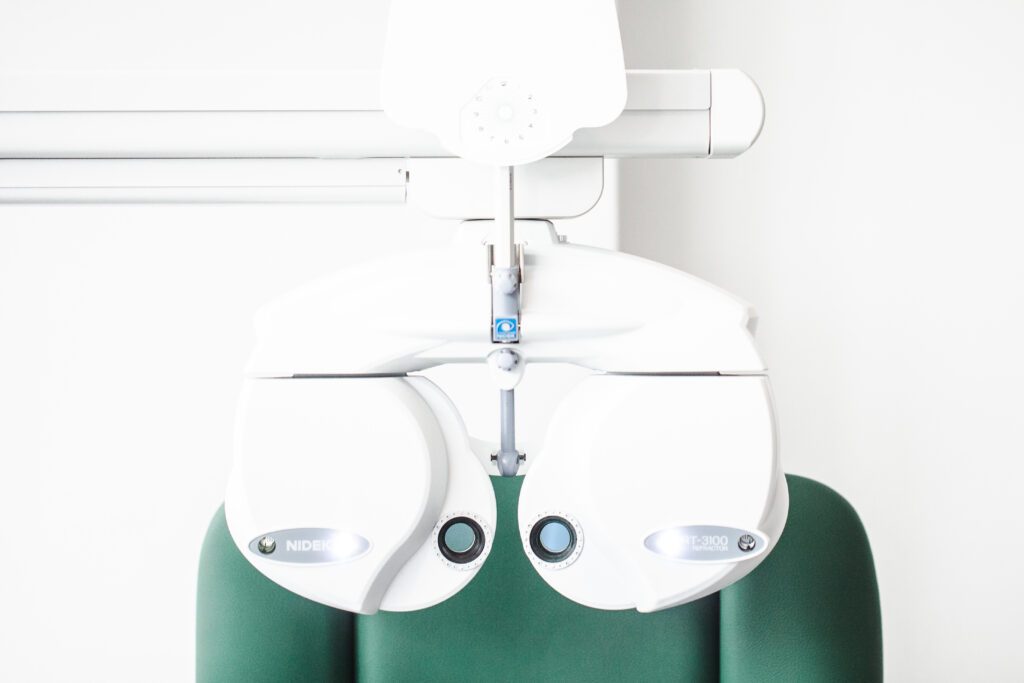How we measure your visual acuity depends entirely on the conditions of your eyes. In the case of a normally sighted eye, i.e. emmetropia, the determination of visual acuity is performed without a correction being applied. In the case of nearsightedness, i.e. myopia, as well as farsightedness, i.e. hyperopia, or corneal curvature, we achieve the best visual acuity with corrective lenses to compensate for the defective vision. We can determine whether a refractive error is present using the following measurement methods:
With a so-called autorefractometer, the refractive values of the optical correction – in most cases glasses – can be determined. This allows us to improve the visual acuity and make the examined eyes sharp even in the distance. The measured values are based on the instrumental measurement. This means: In this case, we do not ask you when you see better with corrections held in front of you, but evaluate the sharpness by measurement alone.
Subjective refraction is a fine adjustment of the refractive values of the optical correction. It is almost always based on the objective refraction we explained above. This serves us as the initial value for the subjective refraction. This depends on the cooperation and the ability of the examined person to provide information, i.e.: you tell us which correction you can see better with.

Here you can make an appointment with us
Vision assessment in children is a particularly important task that we take very seriously at BeyondEye. Since children can still focus very strongly on objects at different distances – in technical jargon this is called accommodation – a cycloplegia is often necessary for an accurate measurement of refraction. In this procedure, the ciliary muscle, which is necessary for accommodation, is temporarily paralyzed by eye drops. This allows us to determine visual acuity without the child accommodating. This examination is performed at our vision school by specially trained professionals in a child-friendly environment.
You can find out more about our vision school here
What does visual acuity mean?
Visual acuity is the measure of your ability to recognize patterns and contours. As described above, there are several ways to do thise to be determined. In the ophthalmological practice, various visual signs are also available for this purpose (for example, numbers, letters, rings, symbols). These visual signs have been standardized in their size and distances from each other and are assigned to specific levels of visual acuity. Most of the time, we indicate your visual acuity in percentages or decimals. A visual acuity of 1.0 corresponds to 100 percent. It is quite normal for young patients with healthy eyes and optimal spectacle correction to achieve visual acuity of 120 to -160 percent. Thus, the expected visual acuity is definitely age-dependent and can be influenced by a wide variety of eye diseases.
What is a refraction?
Refraction is the refractive power of the optical correction (for example, eyeglasses or contact lenses) that an eye requires, with accommodation eliminated (changing the focal power of the eye to see objects in focus at different distances), to produce a sharp image on the retina.